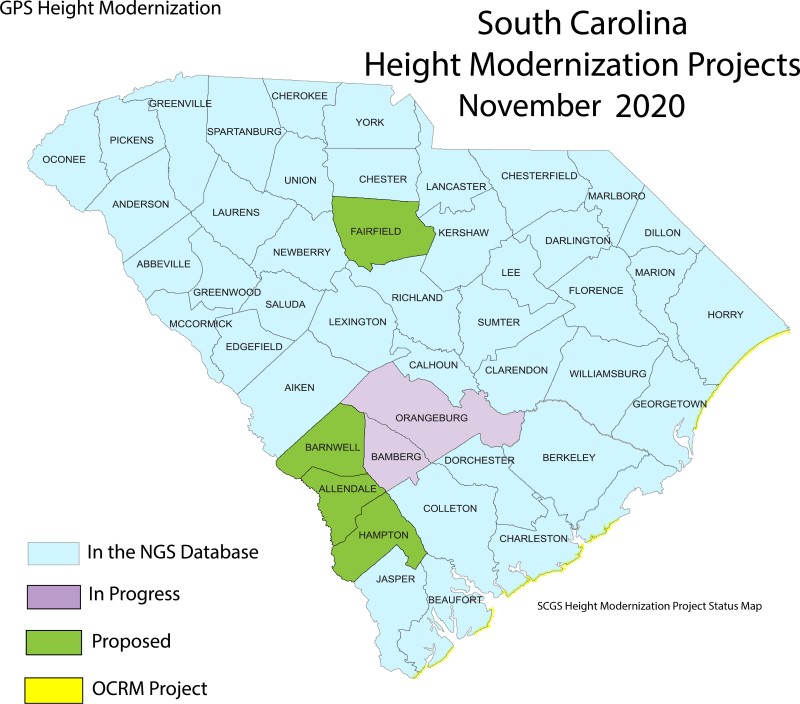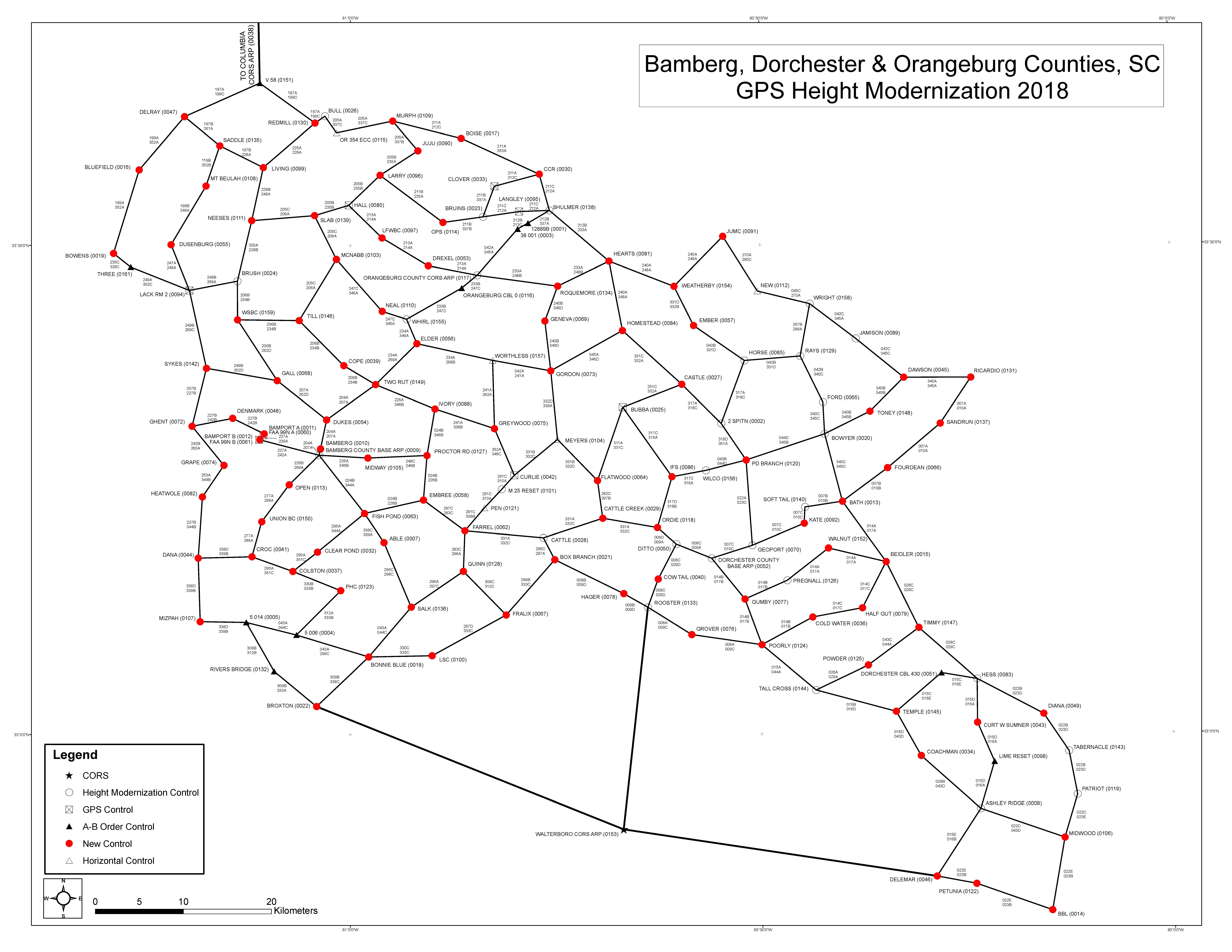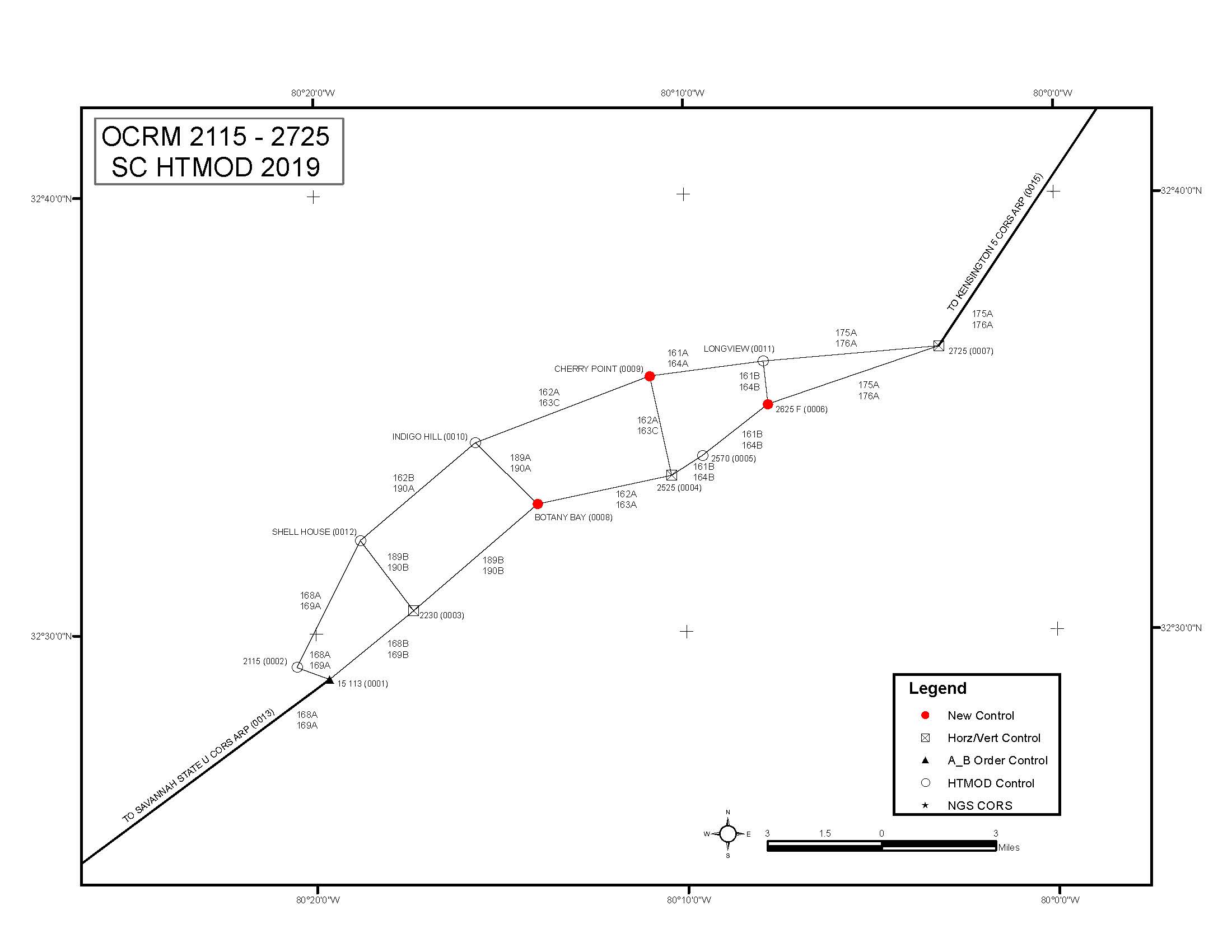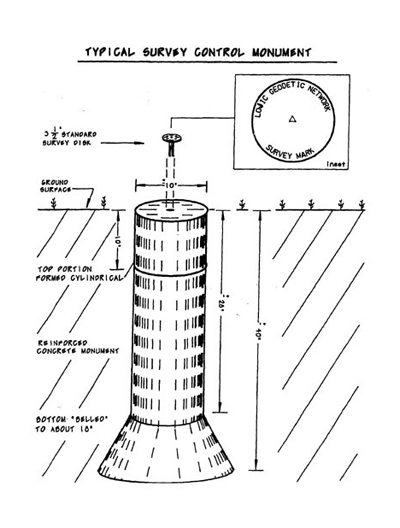To conduct GPS observations a 2.0m fixed height tripod is used with a Trimble Zephyr antenna, connected to a Trimble R9 receiver with a connected backup battery. Observations are a minimum of 60mins. Multiple GPS observations are conducted on new survey monuments and existing quality monuments. Usually conducted by a crew of 4 monuments are observed multiple times by multiple people to ensure accuracy.
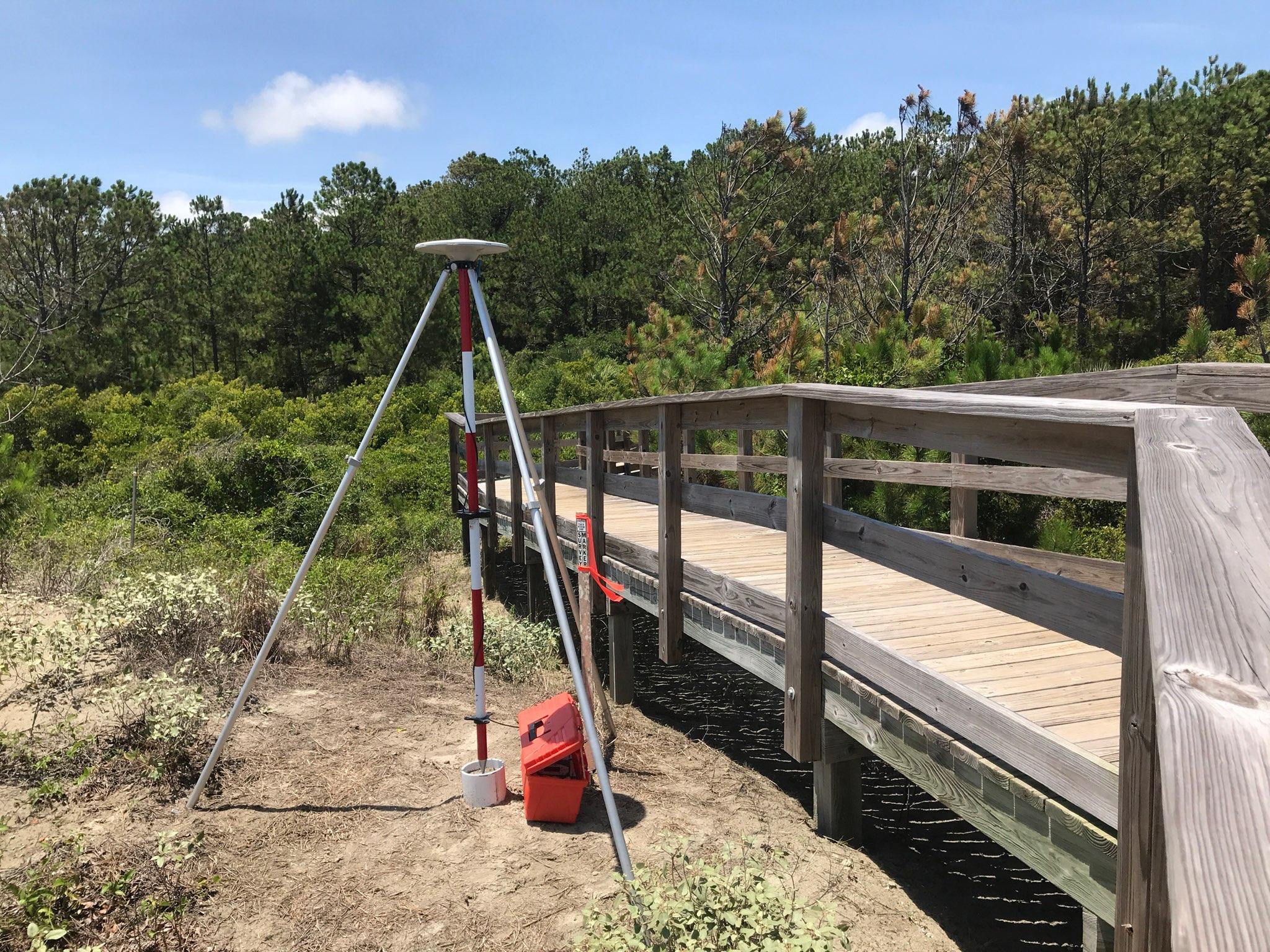
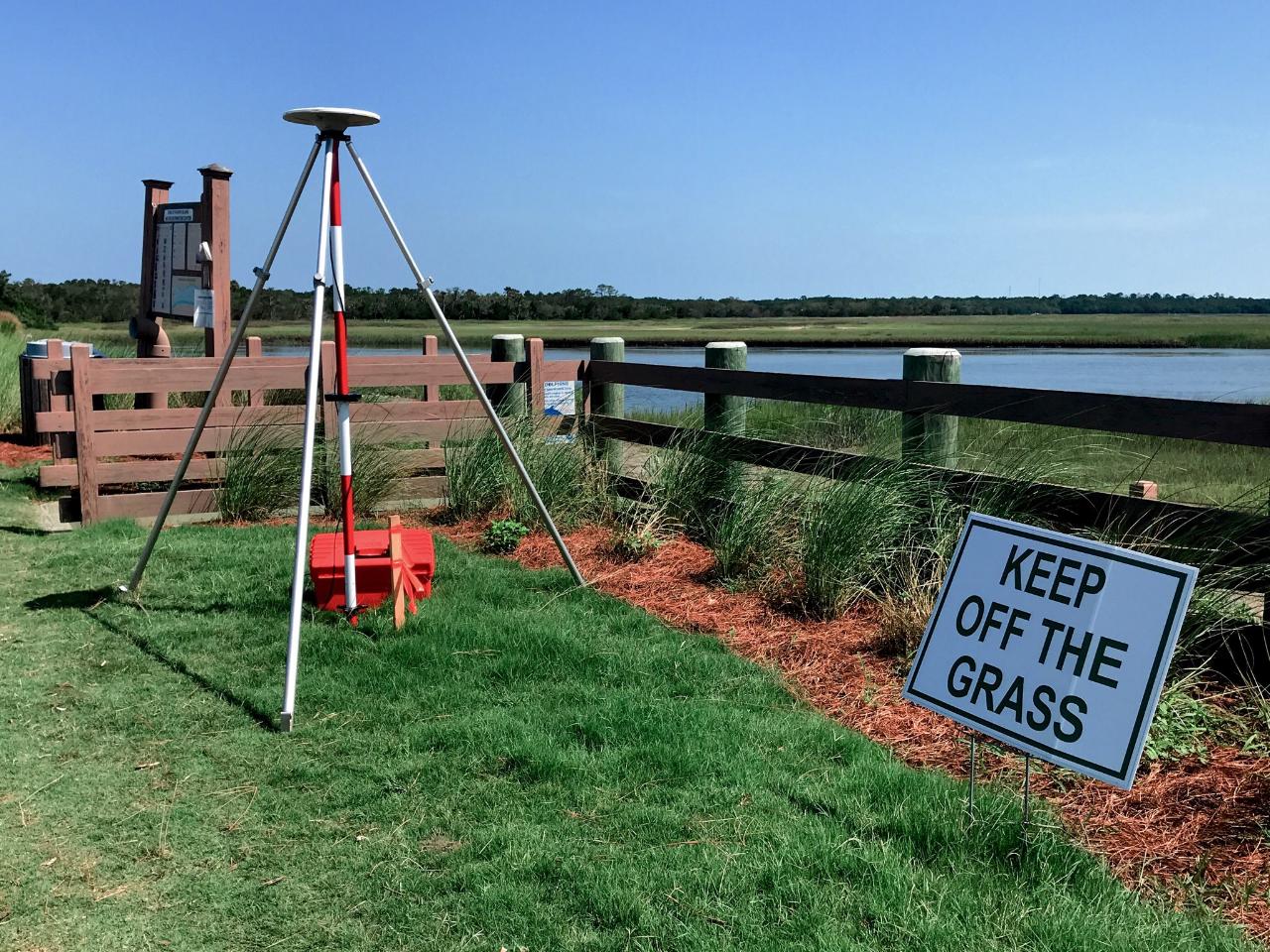
Use the data explorer to find survey monuments in your area. Find your area of interest on the map. Then click the map layers tab on the left hand side of the data explorer. You can then set the search radius you would like to search in. Then click the find marks button to find survey monuments. Click on individual monument icons to open the monument datasheets.
If you have found a survey monument and want to know what the published coordinates, elevation or description are use the NGS Station Name Search tool. Enter the name, and State you are located in, then click submit. A station list will populate, select the station you want to see and click the Get Datasheet button at the bottom of the screen.

